Late for work in Manhattan, you push the crosswalk button and curse silently at the slowness of the signal change. You finally get a green light, cross the street, arrive at the office, get in the elevator and hit the close door (>|<) button to speed things along. Getting out on your target floor, you find that hurrying has you a bit hot under the collar, so you reach for the thermostat to turn up the air conditioning.
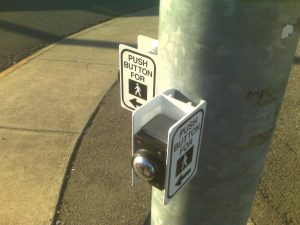
Each of these seemingly disconnected everyday buttons you pressed may have something in common: it is quite possible that none of them did a thing to influence the world around you. Any perceived impact may simply have been imaginary, a placebo effect giving you the illusion of control.
In the early 2000s, New York City transportation officials finally admitted what many had suspected: the majority of crosswalk buttons in the city are completely disconnected from the traffic light system. Thousands of these initially worked to request a signal change but most no longer do anything, even if their signage suggests otherwise.
Naturally, a number of street art projects have popped up around the humorous futility of pedestrians pressing placebo buttons:
Crosswalk buttons were originally introduced to NYC during the 1960s. At the time, there was less congestion and it made sense to leave green lights on for major thoroughfares until cross traffic came along … or until a pedestrian wanting to cross the street pushed a button.

Today, a combination of carefully orchestrated automation and higher traffic has made most of these buttons obsolete. Citywide, there are around 100 crosswalk buttons that still work in NYC but close to 1,000 more that do nothing at all. So why not take them down? Removing the remaining nonfunctional buttons would cost the city millions, a potential waste of already limited funds for civic infrastructure.
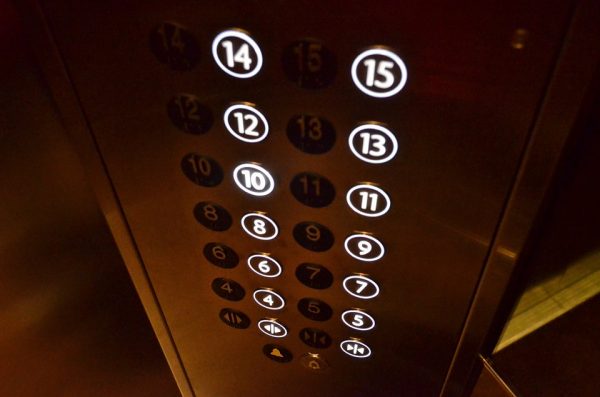
Like push-to-cross buttons on streets, push-to-close buttons in elevators vary in their efficacy. Some work, others do not, and many are keyed for access only by police, firemen or maintenance workers.
There are other tricks that may work in some cases to speed your lift along, including: holding down your target floor button or sweeping your arm across the door sensor so the system thinks someone exited.
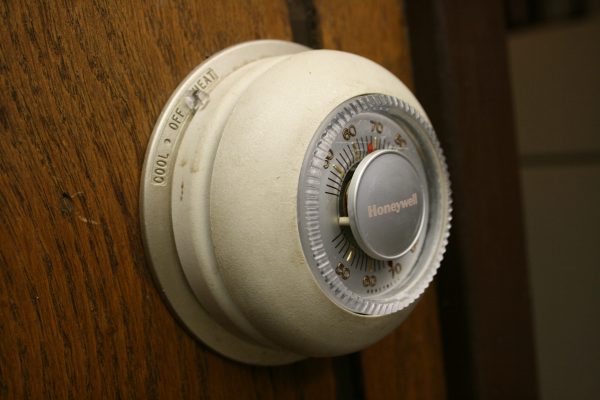
Perhaps one of the most overtly insidious examples of a placebo device is the fake office thermostat. Some offer complete or partial control, but others have absolutely no effect on a building’s HVAC system.
Sometimes the culprit is a real estate leasing company, duping its corporate renters. In other cases, a company boss or senior managers may not want ordinary employees fiddling with the temperature dial.

Estimates vary wildly depending on who you ask, but anywhere from a few percent to the majority of office thermostats may be fake. According to an HVAC technician interviewed by the Wall Street Journal, 90% of office thermostats are non-functional.
In the same article, a senior commercial real estate executive in New York City explains that some buildings go so far as to install white noise generators to simulate the hum of a fan. When users go to turn the dial on the office thermostat, they hear noise and assume it is working. In other cases, the dials may be hooked into the system, but only have a limited range of influence, nudging the temperature slightly.
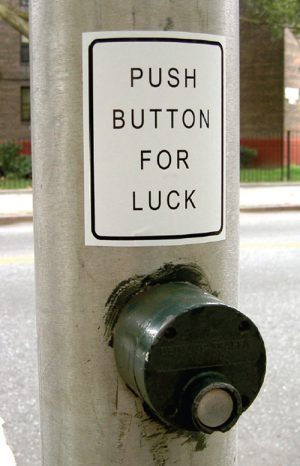
If this all sounds unfair or even infuriating, there is another side to the story. In 1975, psychologist Ellen Langer (now a professor at Harvard) was a graduate student at Yale. She wrote a paper on the “illusion of control,” but framed the effect in a positive light.
“Feeling you have control over your world is a desirable state,” Langer explained in an interview with the BBC. “Doing something is better than doing nothing, so people believe. And when you go to press the button your attention is on the activity at hand. If I’m just standing at the corner I may not even see the light change, or I might only catch the last part of the change, in which case I could put myself in danger.”
Placebo buttons at stoplights are by no means limited to the United States. In places like Hong Kong and London, some buttons work only at certain times of day (if at all). Meanwhile in Hildesheim, Germany a group of interaction design students have developed another way to keep pedestrians busy while they wait, replacing a pointless placebo with an entertaining activity. When the walk light is red, people waiting across the street from one another can share a short game of Pong, playing on screens attached to corner traffic light posts.
At the end of the day, placebo buttons do little harm and may well do a bit of good. If nothing else, they give people something to do while waiting for street lights or elevators, perhaps even a creating brief connection between strangers forced to spend time together either way.




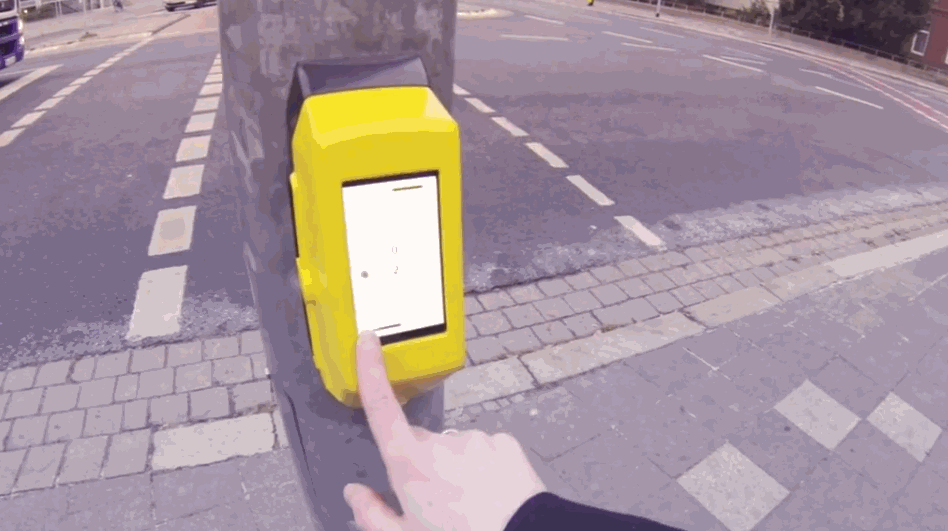



Comments (10)
Share
I’d also guess that pressing the button while waiting to cross reassures people that the green man is coming (eventually), and discourage them from getting impatient and trying to cross the road in oncoming traffic.
i’ve noticed the same thing in the UK, every pedestrian crossing that is part of a larger traffic junction does not need the button to be pushed, you get the green man when the relevant traffic lights turn red to allow another stream of traffic to go. And they always follow the same pattern, pressing the button changes nothing.
standalone crossings of course do need the button to be pushed as the traffic light will always stay on green until it is.
Placebo buttons do actually do some harm, in that they:
1. Teach people to not trust DOT and its signage (“The sign says ‘Press for green light’ but no green light ever comes… I’m never pressing a button or following a DOT sign ever again.”)
2. Further the belief that government doesn’t know what it’s doing or is wasting money (“Look at that, they’ve got one lane blocked up ahead to install yet another one of those worthless buttons at that intersection… with my tax dollars!”)
3. Make it difficult for elderly, blind people and people with disabilities to know whether it’s worth the sometimes-substantial effort to walk the extra tens of additional steps over to the often-inconveniently-located pole to press the button, all in a futile attempt to get a green light. (“My back is killing me, but I don’t know if I should walk those 10 extra steps to press that button, because I don’t know if it’s the 1-in-10 that actually works.”)
I understand that it would cost the city millions to rip out these placebo buttons… but perhaps they could slap a bright orange sticker on them saying “disconnected” or something so as to avoid #3 above. The saddest sight I’ve seen in a while was watching an old lady hunched over struggling to not lose her balance as she let go of her walker to reach over to press the button because it was obvious she’d need a longer-than-normal green light to get across the road… it’s really cruel if her efforts were in vain (as this article suggests they very well might have been).
With placebo buttons I get the frustration of non-control and being tricked. I don’t even consider them “placebo”, just evil.
I very much prefer to not have an option (controlling the temperature of the office), than having one that doesn’t do what they supposed to do (let me get warm in the winter and stop sweating in the summer).
Then of course you’ll press that close button in your home elevator every time you get in, just hoping that this time it won’t take 10 seconds to begin closing the doors. But it will.
It doesn’t bother me. Ninety percent of the work I do once I get to the office has no impact on the real world either.
Here in Pittsburgh, the “press button to cross street” button is for real at most* intersections–you will not get a walk signal if you don’t press the button, ever. There’s a particularly hazardous intersection by the museums that works this way, and the many visitors to the area don’t know to push the button, so when they never get a walk signal, they scurry across with cars coming at them from all sorts of directions.
The “push to cross” button comes in handy for me at one intersection while riding my bike. There’s a stop light, in the direction I’m usually coming from, that is magnetically triggered to turn green. My aluminum-frame bike does not have enough steel to trigger the light, so if a car doesn’t pull up behind me, I lean over and press the pedestrian-crossing button to get the light.
*There are several new signal situations where the “push to cross” button just turns on voice information for blind users–you will get the walk signal whether you press the button or not.
Very surprised not to see you quote Kurt Vonnegut’s observation on precisely this topic! It’s from his outstanding novel, “The Sirens of Titan,” where he describes a spacecraft constructed by Martians to transport Earthlings:
“The only controls available to those on board were two push-buttons on the center post of the cabin—one labeled on and one labeled off. The on button simply started a flight from Mars. The off button was connected to nothing. It was installed at the insistence of Martian mental-health experts, who said that human beings were always happier with machinery they thought they could turn off.”
Like voting for Bernie in California
Like voting…
Stockholm in Sweden combines the worst possible combination of traffic light implementations:
– lights with buttons that totally ignore pedestrian input
– lights that react to the button, but only after an inflexible, hard-coded waiting interval (which can be up to one minute, regardless of how many cars are passing)
– lights that never give you a green crossing signal unless the button is pressed *before* the lights change
– lights that behave differently at different times of day and/or different days of the week
Because each junction behaves in a roughly unique and unpredictable way, I find that people either don’t press the button when needed or ignore the signals and run across the street even when cars are racing past.
Most of the decisions about how lights behave begin and end with someone whose job is optimizing the flow of car traffic. Pedestrians who actually live and walk in the city are simply seen as an undesirable obstacle to that goal.
Not true in my neighborhood. If there are no pedestrians the light will NEVER change. You actually have to press the button to cross the street.